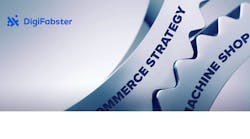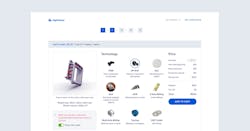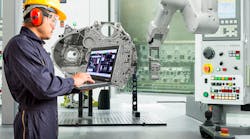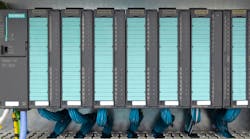Investing in a B2B eCommerce platform is one of the single most important things you can do to boost your shop’s bottom line, but building a robust strategy is about more than software alone. Without a plan for implementation and marketing, you won’t get far. We’ve compiled a list of tips and B2B eCommerce trends to help you craft or refine your company’s eCommerce strategy.
What is B2B eCommerce?
B2B eCommerce is pretty much what it sounds like: an online transaction between two businesses. We often associate eCommerce with B2C transactions, but B2B eCommerce solutions make it easy to sell custom CNC machined parts online too. Still, there are some key differences between B2B and B2C that you should keep in mind as you develop your strategy. B2B transactions typically involve a longer buying cycle, which makes sense: an automobile manufacturer or toy company is less likely to spontaneously splurge on your services than the average consumer is on a new pair of shoes. Free shipping and discounts aren’t really applicable with B2B, but there are still ways to win over prospective customers. An example of this is offering a superior customer experience. For instance allowing a prospective customer to submit a model of their part and be able to choose the means of manufacturing (2.5-axis vs 5-axis machining) then choosing the material that will suit them best. They would then receive a quote based on their selections. All this while your competition is asleep or is still trying to open their manual quoting tool.
What are the Biggest B2B eCommerce Trends?
Capitalize on your technology and automate your quoting.Though B2B eCommerce involves much more than technology, a B2B eCommerce platform is one of the most important components of your strategy. There’s a common misconception that SaaS tools, including RFQ software, won’t work for companies with complex workflows, including machine shops However, we know small shops will benefit from automated quoting software for CNC manufacturing that even small shops will benefit from automated quoting software for CNC manufacturing. Once you have picked your preferred RFQ software automation can help you strengthen your relationships with existing customers.
Optimize your marketing but be sure to target the right people.You can’t break out into eCommerce without a solid B2B eCommerce platform, but software alone won’t solve everything. You still have to promote your services and make sure you’re targeting the right prospects.
The good news is that some of the most effective offline tactics work with eCommerce too; for instance, a lot of it boils down to your audience. CNC Machining is relevant to a range of industries, not only the top markets like transportation, aerospace, oil & gas and medical, but also education, energy, architecture, and others. Think beyond the big players, but let your experience and other factors, like your shop’s capabilities end even its location, guide your approach. Employ top digital marketing tactics—including email, search engines, and social media—to reach your people.
Here’s another great resource on digital marketing for 3D printing and CNC shops.
Make the most of your RFQ software and simplify the sales process.
Another advantage to automating the RFQ and ordering process is to take orders you would not normally quote. We have all been there, If the RFQ looks like a longshot for any number of reasons your best bet is to “no bid” and wait for the next one that is more likely to land as an order. With automation you are not using your resources to respond to the RFQ, let the software work for you. You respond to those difficult RFQs with the software assistance and win orders you would normally steer clear of.
The bottom line: A solid B2B eCommerce strategy is no longer a nice-to-have for a small business—it’s a necessity to thrive in a competitive landscape. You need one to not only win over new customers, but also to retain the best ones. With a well-crafted strategy, reflective of the latest B2B eCommerce trends, you are well on your way to more efficient processes and big-time ROI.
Interested in learning more about automating your quoting and order process? See it in action by scheduling a live demonstration here.









